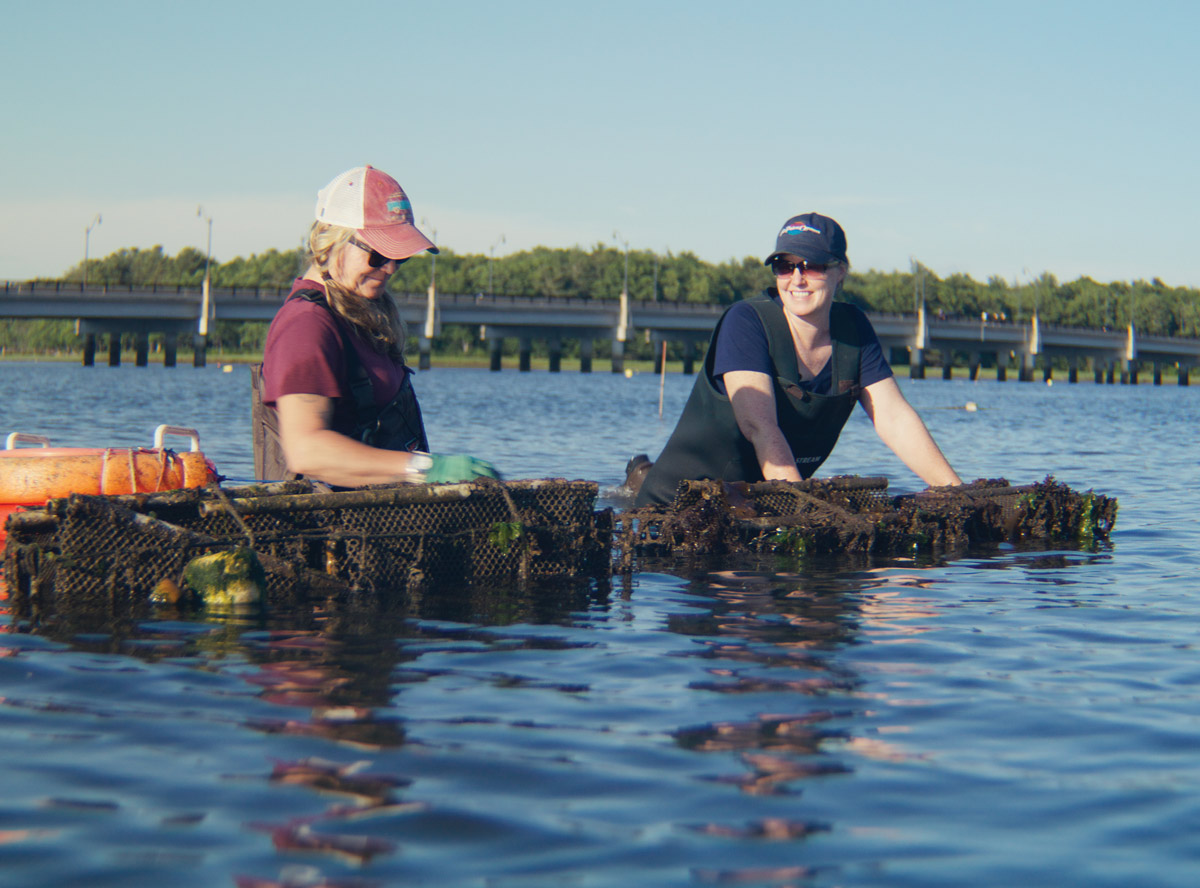Current
The Oyster Is Their World

On a recent summer day, Krystin Ward ’06, a laboratory research supervisor at UNH’s Jackson Estuarine Laboratory, navigated a small skiff in New Hampshire’s expansive Great Bay Estuary. Piloting the boat across choppy, dark water, she spoke of working in oyster reef restoration in Great Bay — supporting the efforts of research professor Ray Grizzle — and the beginnings of her own oyster farm, Choice Oysters, in 2011.
Ward’s Choice Oysters is one of 11 commercial oyster farms in the Great Bay Estuary; her sister, Laura Brown, operates another, Fox Point Oysters. In 2022, oyster farmers in New Hampshire (there’s one additional farm in the Hampton-Seabrook Estuary) harvested 821,157 oysters; since 2013, the value of oyster aquaculture in New Hampshire has grown more than 1,000 percent, according to New Hampshire Sea Grant.
Oyster lovers across the region certainly have Grizzle, Ward and their partners to thank for this revitalized fishery. But the UNH efforts have gone beyond bringing the briny bivalves to diners: The researchers are working hard to restore the natural oyster reefs that once dominated Great Bay, even lending Durham’s Oyster River its name.
Ward described the success of UNH’s long-term collaborative effort to restore the bay’s oyster reefs, 1,000 acres strong in the 1970s but since reduced by nearly 90 percent due to disease, pollutionand harvesting. Based on aerial surveying conducted in 2020, live natural oyster reefs now cover approximately 80 acres of Great Bay.
“When I began at UNH in 2005, Ray had already been doing oyster reef restoration in the bay for five years,” Ward said. “In 2009, we partnered with some major organizations, including the USDA and The Nature Conservancy, to really grow these efforts and to use a barge every summer to deposit several tons of oyster and clam shells on or near depleted beds, building them up so that oyster larvae will set and grow upon them.”
On this recent summer day, Ward and Brown were checking on efforts to deposit about 450 cubic yards of shells that have been stored and dried for at least six months to remove any remaining tissue near Nannie Island, situated just off the Great Bay National Wildlife Refuge in Newington. This restoration project has been ongoing since the 15-acre reef was closed to shellfish harvesting in 2021. By adding new beds and farmed oysters to the site, they’re hoping to jumpstart the native oyster population.
The goal at Nannie Island is to get more larvae distributed into the water and provide new surfaces for them to settle on and grow. Their efforts are paying off. Using underwater cameras, Ward and Grizzle can see more oyster larvae and juvenile oysters settling on the Nannie Island reef.
“If this trend continues, we’re hopeful that the oyster population may rebound and some of this area will be open to recreational harvest again,” she said. That’s good news not only for would-be wild oyster foragers but for the health of the estuary: A single oyster filters up to 50 gallons of water each day.
Ward notes that oyster farming and restoring wild oyster reefs are symbiotic activities. “Through research, we’ve found that even the oyster farms in Little Bay are acting like reefs and supporting greater diversity,” she said. “It’s really neat to think about the impacts of local oyster farms toward supporting the overall health of Great Bay and its many tributaries.”